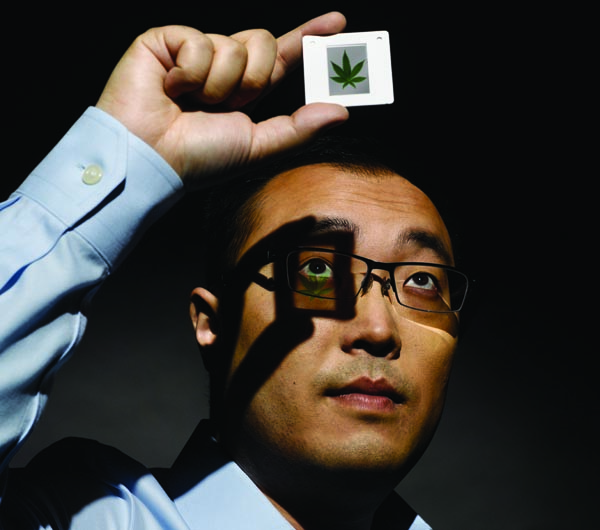Indigo Rose (The Purplest Tomato)
There’s a new tomato in town, Indigo Rose. She gets her dark skin from from high levels of anthocyanins —flavonoids that contribute purple pigment to eggplants (and Cannabis), red to grapes, blue to blueberries. Anthocyanins are potent anti-oxidants. If you have access to some soil in a place that gets sun, it’s not too late…
Indigo Rose tomatoes are for sale as starts in 4-inch pots from Kassenhoff Growers. Look for their booth at the farmers market across from the Grand Lake Theater Oakland on Saturdays, and the farmers market at the DMV Parking Lot on Sunday. Kassenhoff plants are beautifully healthy and ready to take off.
The Indigo Rose was “developed by Jim Myers at Oregon State University using traditional plant breeding techniques,” according to the Johnny’s Catalog. In the accompanying photo they look like big Bing cherries (which are also high in anthocyanins). Some hip dispensary ought to buy a thousand seeds (price: $10.15) and give out packets.
Kassenhoff Growers got their Indigo Rose seeds from Fedco, a co-op in Maine that tries to exclude genetically-modified seeds from their product line.
“We all share the reality of genetic drift,” says a sad riff on the Fedco website explaining why they can’t guarantee that every seed they sell will be GMO-free.
“To help ensure the purity of our seed, we have for the past ten years employed industry leader Genetic ID to test random samples of our sweet corn lots for the presence of transgenic contamination. Because of the risks posed by production of genetically engineered Roundup Ready beets, we added beet and chard varieties to our GE testing program last year.
“We have removed from our inventory and our catalog any lots that have tested positive for GMO contamination or show trace indications of GMO presence.
“A negative test result, while not guaranteeing genetic purity, improves your chances that the seed is uncontaminated. These tests are expensive, but in a time of genetic roulette, they are necessary though not sufficient to assure seed purity. Only if the seed trade takes an adamant position that we will not tolerate GE contamination in our product can we maintain any integrity in our seed supply.”
Milkweed (Syriaca)
Another plant worth pushing is milkweed. Most varieties are butterfly-attractors. The flowers are star-shaped and beautiful. Rosie was reading a high-end catalog the other day and saw an ad for a Syriaca comforter.
“Failed attempts have been made to exploit rubber (from the latex) and fiber (from the seed’s floss) production from the plant industrially. The fluffy seed hairs have been used as the traditional background for mounted butterflies. The compressed floss has a beautiful silk-like sheen. The plant has also been explored for commercial use of its bast (inner bark) fiber which is both strong and soft. U. S. Department of Agriculture studies in the 1890s and 1940s found that Milkweed has more potential for commercial processing than any other indigenous bast fiber plant, with estimated yields as high as hemp and quality as good as flax. Both the bast fiber and the floss were used historically by Native Americans for cordage and textiles. Milkweed oil from the seeds can be easily converted into cinnamic acid, which is a very potent sunscreen when used at a 1-5% concentration.
“The flowers often constitute small traps for insects who cannot take off again. Several insects live off the plant, including the Monarch Butterfly… The flower nectar has a high glucose content and was used by natives as a sweetener.”
Hemp isn’t the only useful plant that we’re missing out on, being so disconnected from nature.
—O’S News Service





